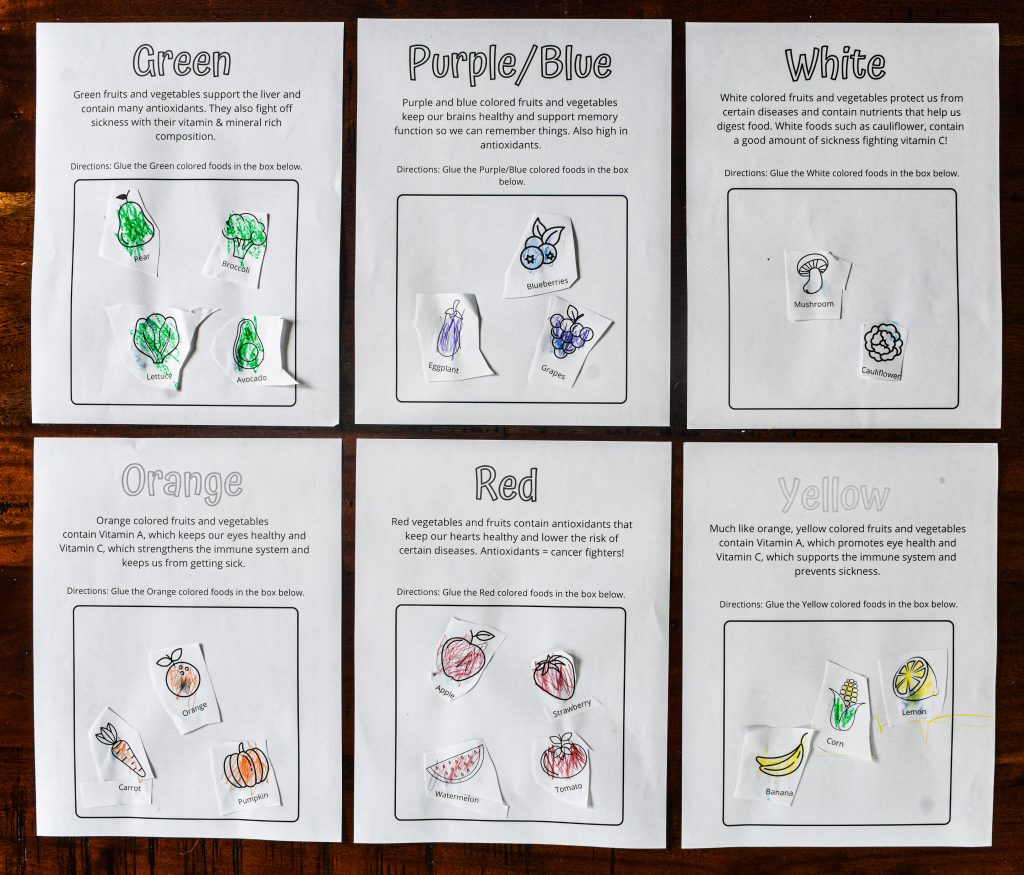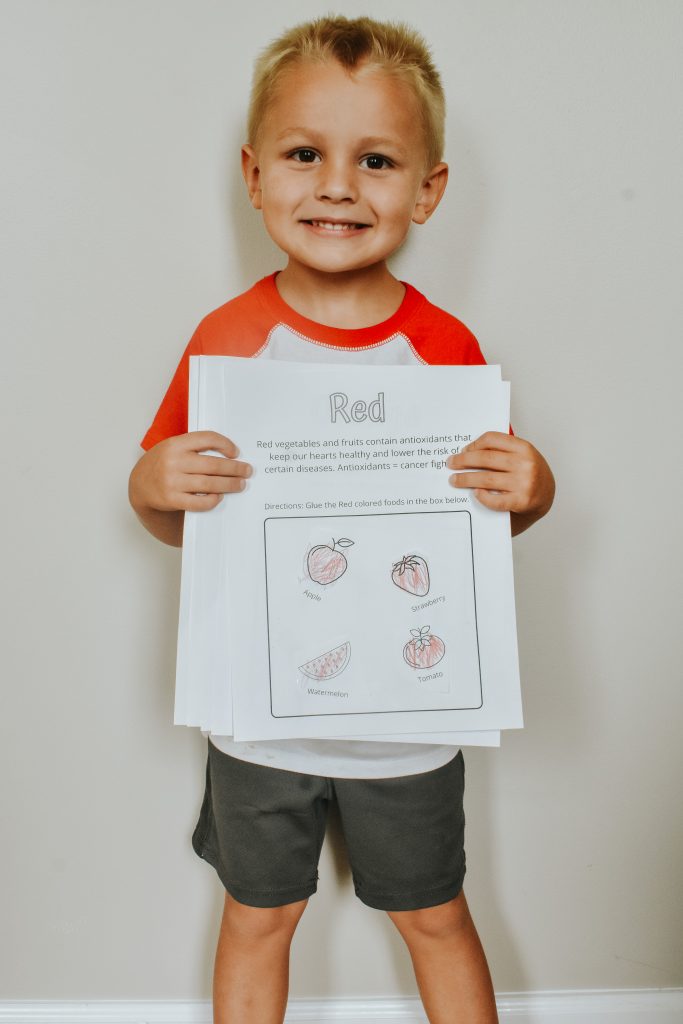Lately I’ve been catching myself using the “You need to eat healthy foods first,” phrase often. My son has a fervent sweet tooth, and like most kids, prefers sugary snacks to the vitamin rich foods he needs for solid growth and development.

But to a child, what is this “healthy” term, and why must it be the barrier to the tastier things in life? After asking myself this question, I decided it was important that I break it down for him.
A colorful diet is a healthy diet, and fruits and vegetables are the gateway. In this Colors of Nutrition printable learning activity, kids will first color the produce page. Next, they will cut and glue each fruit or veggie on the corresponding “color” page.
For every color page there is a quick passage about nutrition. It’s important for kids to grasp what healthy means, and understand how colorful foods impact the body in different ways.
Get started with our Colors of Nutrition printable download below!

Directions
Have your child or student fill in the fruits and vegetables on the produce page. This can be done simply with crayons, pencils or markers. Another option is to use construction or tissue paper for more color and scissor practice.
Then, have them cut the pictures out and glue them to the corresponding color page. While gluing each fruit and vegetable, read the nutrition excerpt on the page. Be sure to emphasize the importance of a colorful diet!
Excerpts:
- Red colored fruits and vegetables keep our hearts strong and healthy. They also contain antioxidants, which lower the risk of diseases such as cancer.
-
Orange colored fruits and vegetables contain Vitamin A, which keeps our eyes healthy and Vitamin C, which strengthens our immune system and keeps us from getting sick.
- Green colored fruits and vegetables support our liver and contain disease fighting antioxidants. Cruciferous green colored foods such as broccoli or brussels sprouts are a good source of Vitamins C, K, E and fiber.
-
Purple and blue colored fruits and vegetables keep our brains healthy and support memory function so we can remember things. They also contain those disease fighting antioxidants.
-
Yellow: Much like orange, yellow colored fruits and vegetables contain Vitamin A, which keeps our eyes healthy and Vitamin C, which supports our immune system. Yellow foods also help our bodies heal cuts and scrapes.
- White colored fruits and vegetables protect us from certain diseases and contain nutrients that help us digest food. Cruciferous white colored foods such as cauliflower are a good source of Vitamins C, K, E and fiber.

In addition to this learning activity, have your child assist in shopping for produce and meal prep. This way it’s possible to have organic conversations about nutrition and the value of a healthy diet. Feel free to supplement this activity with more on the affects of colorful foods on the body here.
The finished product!

We hope this introduction to the colors of nutrition will inspire your child or student to consume more fruits and veggies! For more excellent learning activities, check out more printable content HERE!
Download Our Freebie!
Subscribe to our blog to get your FREE Colors of Nutrition printables as well as our latest blog posts and freebies sent straight to your inbox!
Thank you!
You ROCK! Thanks for subscribing. Download the Colors of Nutrition printables here.








